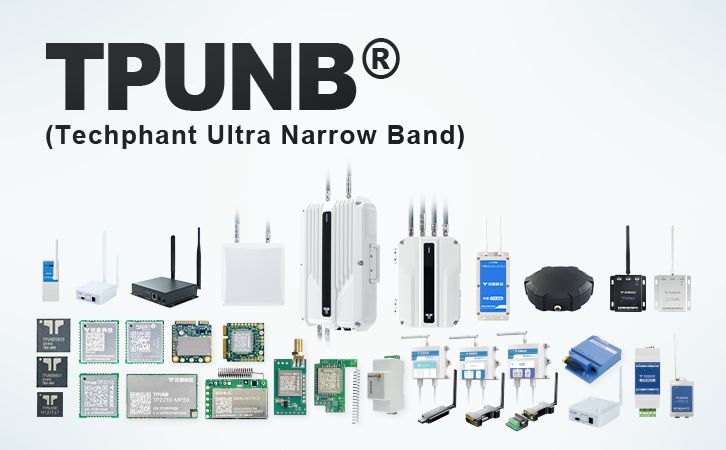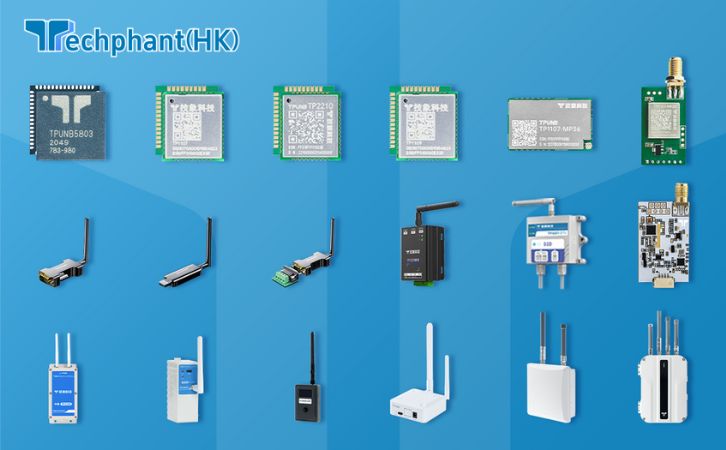Key Differences Between Smart Homes and Intelligent Buildings.
1. Scope of Application and Objectives
Smart Homes: Focus on residential environments, integrating home appliances (e.g., HVAC, lighting, smart locks) to enable remote control and automation. The core objective is to enhance household safety, convenience, comfort, and sustainability through personalized, intelligent living experiences.
Intelligent Buildings: Encompass diverse building types, including residential, commercial, healthcare, transportation, and ten other categories. They aim to optimize building performance, energy efficiency, security, and sustainability across the entire lifecycle. Objectives include holistic lifecycle management via sensor-based structural health monitoring or adaptive environmental controls.
2. Technological Integration and System Complexity
Smart Homes: Rely on short-range communication technologies (e.g., Wi-Fi, Bluetooth, Zigbee) for device connectivity. Systems are relatively simple, emphasizing localized automation (e.g., smart thermostats adjusting room temperatures).
Intelligent Buildings: Require advanced system integration across subsystems (HVAC, lighting, security, energy management). Utilize low-power wide-area networks (LPWAN) or IoT for large-scale data handling. Centralized Building Management Systems (BMS) enable unified control, unlike Smart Homes, which depend on user terminals (e.g., mobile apps).
3. Design and Deployment Phases
Smart Homes: Typically retrofitted during home renovations, with devices added post-construction to upgrade existing infrastructure.
Intelligent Buildings: Designed with embedded smart systems (sensors, automation controllers) from the planning stage, enabling deep integration with architectural structures and adaptive functionalities (e.g., dynamic temperature adjustments based on occupancy).
4. Energy Management and Sustainability
Smart Homes: Optimize local energy use via smart devices (e.g., energy-efficient lighting, AI-driven climate control) but focus on individual household reductions.
Intelligent Buildings: Prioritize holistic energy efficiency through renewable energy integration (solar panels), AI-powered predictive maintenance, and grid-level carbon footprint reduction across the building lifecycle.
5. Use Cases and Challenges
Smart Homes: Face challenges like wireless network coverage and device interoperability (e.g., Wi-Fi limitations in large spaces).
Intelligent Buildings: Encounter complexities such as distributed sensor deployment, ultra-low-power communication needs, cybersecurity risks (e.g., device hijacking), and high system integration costs requiring ROI balancing.
6. Future Trends
Smart Homes: Will evolve with AI and machine learning, enabling habit-learning devices (e.g., automated lighting adjustments) and expanding to community-level intelligence.
Intelligent Buildings: Transitioning to “smart buildings” with self-optimizing capabilities (e.g., dynamic energy allocation via big data and adaptive algorithms), becoming cornerstones of future urban infrastructure.
Conclusion
While Smart Homes represent a subset of Intelligent Buildings, they differ significantly in scope, technical depth, system complexity, and objectives. Smart Homes prioritize personalized residential needs, whereas Intelligent Buildings deliver cross-disciplinary, lifecycle-oriented solutions for efficiency and sustainability. As IoT and AI advance, the two will converge, driving the development of smart cities.
This structured comparison highlights their distinctions while underscoring the shared technological trajectory toward integrated, intelligent environments.
Typical Projects in Smart Homes and Intelligent Buildings
1. Smart Residential Projects
Smart home systems enhance comfort, security, and convenience through integrated lighting control, environmental regulation, audio-visual systems, AI-driven interfaces, and remote management. Technologies like IoT, network communication, and automation enable efficient household resource management.
2. Intelligent Office Buildings
Examples include Berlin’s Cube Intelligent Office Building, which optimizes workspace efficiency and employee experience via smart systems. IoT-enabled HVAC, lighting, and security systems improve energy efficiency and occupant comfort.
3. Smart Healthcare Facilities
Projects like Finland’s Central Newstar Hospital integrate advanced medical equipment and patient-centric design to enhance healthcare delivery. IoT systems manage medical devices and patient data, improving diagnostic accuracy and response times.
4. Smart Hotels and Commercial Buildings
HDL’s smart hotel system in Conghua, Guangdong, and ThinkHome’s full-house control solution in Nanjing’s Xilongshan Courtyard Villa demonstrate IoT-driven hospitality enhancements. Smart lighting and security systems elevate commercial space efficiency and user satisfaction.
5. Smart Communities and Smart Cities
Projects like Hangzhou’s “Future Smart Community” leverage IoT hardware and sensors to create eco-friendly, convenient living environments. Applications include smart security, parking, and energy management systems, fostering sustainable urban development.
6. Smart Parking and Lighting
IoT-based smart parking systems optimize space utilization, while intelligent lighting adjusts brightness dynamically to reduce energy consumption and improve environmental quality.
7. Smart Security and Perception Systems
Biometric locks, cameras, and AI-driven analytics enhance home and building security. Sensor networks monitor environmental parameters (temperature, humidity, air quality) for real-time adjustments.
Technical Challenges in Smart Homes and Intelligent Buildings
1. Compatibility and System Integration
Fragmented protocols (e.g., Zigbee vs. Wi-Fi) and closed ecosystems hinder interoperability. Intelligent buildings face additional complexity in unifying power systems and minimizing wiring costs.
2. Data Security and Privacy
Open home networks increase hacking risks, while limited energy management in buildings exacerbates data leakage concerns. User privacy fears impede adoption.
3. Cost and ROI Barriers
High upfront investments in devices, software, and maintenance deter adoption. Long-term operational costs (e.g., degraded device performance) further limit scalability.
4. Standardization Gaps
Lack of universal protocols and regulatory frameworks creates interoperability issues. Industry-specific standards raise entry barriers for non-members.
5. Talent Shortages
Critical need for cross-disciplinary expertise (AI, IoT, system integration) outpaces current workforce capabilities, slowing innovation.
6. User Acceptance
Limited awareness of benefits and perceived complexity hinder adoption. Behavioral shifts (e.g., app-based controls) require user education.
7. Hardware and Infrastructure Limitations
Wi-Fi and Zigbee signal coverage constraints affect stability. Advanced AI applications face hardware bottlenecks, while smart buildings demand robust network bandwidth.
Convergence of Smart Homes and Buildings in Smart Cities
1. Data Sharing and Intelligent Decision-Making
IoT sensors in intelligent buildings upload environmental data (temperature, energy use) to city platforms. Smart cities analyze these insights to optimize energy grids, traffic flows, and public infrastructure.
2. Interconnected Services and Convenience
Smart parking integrates with city traffic systems for real-time updates. Security networks link to municipal platforms for rapid incident response. Additional services (telemedicine, automated delivery) enhance resident quality of life.
3. Green Development and Sustainability
Automated systems and renewables reduce building carbon footprints. Citywide platforms monitor air quality and noise pollution, enabling targeted interventions.
4. Enhanced Security
City-building security networks enable 24/7 surveillance and anomaly detection. Predictive maintenance identifies fire or electrical risks early. Biometric and AI-driven systems elevate safety standards.
5. Personalized User Experiences
AI tailors lighting, climate, and ventilation to occupant preferences. Voice and gesture controls create intuitive interactions, boosting satisfaction.
6. Economic and Industrial Synergies
Smart buildings drive growth in IoT hardware, AI development, and data analytics. They also create jobs in construction, maintenance, and tech sectors.
7. Challenges and Mitigation Strategies
Data encryption and unified protocols address security and interoperability. Policy reforms and technological advancements will resolve emerging issues.
8. Future Outlook
Deep integration with cloud platforms, 5G, and AR will transform buildings into key nodes in citywide resource networks. This convergence will enable real-time optimization of urban infrastructure.
Divergent Energy Management Paths
1. Scale and Application
Smart Homes: Focus on single-family units using smart thermostats and lighting to reduce localized waste.
Intelligent Buildings: Deploy BMS to manage HVAC, lighting, and energy storage across large-scale facilities. Example: Phase-change materials store daytime heat for nighttime release, reducing AC loads.
2. Depth of Management
Smart Homes: Emphasize user behavior guidance (e.g., smart meters showing consumption reports).
Intelligent Buildings: Integrate renewables (solar/wind) and storage systems. Advanced Metering Infrastructure (AMI) enables bidirectional communication for optimized energy use.
3. Technology Integration
Smart Homes: Reliance on Wi-Fi/Zigbee-connected devices for isolated energy control.
Intelligent Buildings: Deep subsystem integration (lighting, HVAC, security) via BMS. Digital twin technology simulates energy scenarios for optimization.
4. Goals and Strategies
Smart Homes: Minimize waste via habit-adjusted thermostats and demand-response programs.
Intelligent Buildings: Maximize overall efficiency through real-time analytics and peak-shaving strategies.
5. Scalability and Sustainability
Smart Homes: Limited to individual units but can integrate with smart grids.
Intelligent Buildings: Leverage distributed energy resources (DER) and grid-level bidirectional communication for self-sufficiency.
6. User Engagement
Smart Homes: Apps provide consumption data and savings tips.
Intelligent Buildings: Automate decisions (e.g., dynamic HVAC adjustments) to minimize user intervention.
Distinctions Between Intelligent and Smart Buildings
| Aspect | Intelligent Buildings | Smart Buildings |
|---|---|---|
| Design Philosophy | Optimize structure, systems, services, and management for efficiency and sustainability. | Incorporate AI, big data, and adaptive algorithms for self-learning and decision-making. |
| Functionality | Manual adjustments by staff (e.g., preset HVAC modes). | Autonomous sensing and self-regulation (e.g., AI-driven HVAC adjustments). |
| Technology Integration | Decentralized subsystems with limited data sharing. | Unified architecture eliminating “data silos” via high-performance networks. |
| Automation Level | Basic automation driven by predefined rules. | Advanced automation using ML to predict user needs and optimize resource allocation. |
| User Responsiveness | Focus on energy savings with minimal personalization. | Hyper-personalized services (e.g., smart parking, facial recognition access). |
| Cost-Benefit Analysis | Lower initial costs; ideal for budget-constrained projects. | Higher investment with long-term gains in energy efficiency and user satisfaction. |
| Future Trajectory | Evolving through IT and automation integration. | Representing “Building 3.0.” prioritizing human-centric, green, and interconnected systems. |
Summary: Intelligent Buildings emphasize systematic efficiency, while Smart Buildings leverage AI and data to achieve self-optimization and user-centric experiences. Both are critical to shaping future urban ecosystems.



